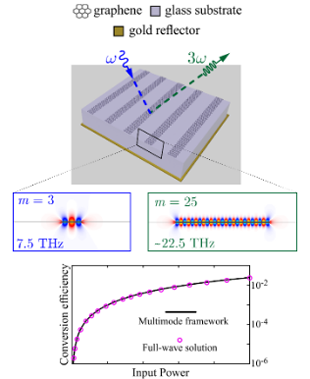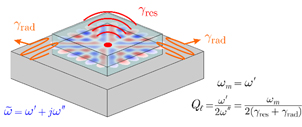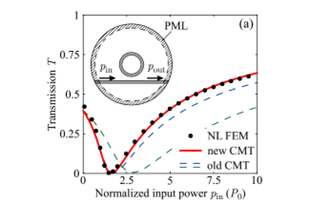Search
CLOSETheoretical frameworks and fundamental aspects in photonics
Dr. Odysseas Tsilipakos
Theoretical and Numerical Methods for Photonics, Optoelectronics and Metamaterials
- Metasurfaces for dispersion, wavefront, and polarization control
- 2D photonic materials for nonlinearity and gain
- Theoretical frameworks and fundamental aspects in photonics
- Electromagnetic phenomena in laser processing of materials
Full-wave numerical simulations (FEM, FDTD, etc.) are indispensable in photonics. However, theoretical frameworks that reduce the complexity of the equations to be solved through judicious approximations can speed up the study of photonic structures by orders of magnitude and tackle complex nonlinear or multiphysics problems. Our objective is to develop theoretical frameworks that allow for the efficient and accurate study of photonic structures and provide physical insight into the light-matter interaction processes. We have systematically developed temporal coupled mode theory (CMT) frameworks based on perturbation theory to study a broad range of nonlinear phenomena. Our research activity is recently focused on studying the resonant modes supported by non-Hermitian photonic structures (quasi-normal modes, QNMs). We aim to develop theoretical frameworks based on the expansion of the scattered field on the basis of the supported QNMs, allowing to identify the resonant modes that mediate light-matter interaction processes and to efficiently reconstruct the optical response. In the same line of research, we revisit fundamental quantities and physical processes in view of novel materials with reduced dimensionality, loss, and dispersion.
Key Publications
Theoretical and Numerical Methods for Photonics, Optoelectronics and Metamaterials
- Metasurfaces for dispersion, wavefront, and polarization control
- 2D photonic materials for nonlinearity and gain
- Theoretical frameworks and fundamental aspects in photonics
- Electromagnetic phenomena in laser processing of materials





